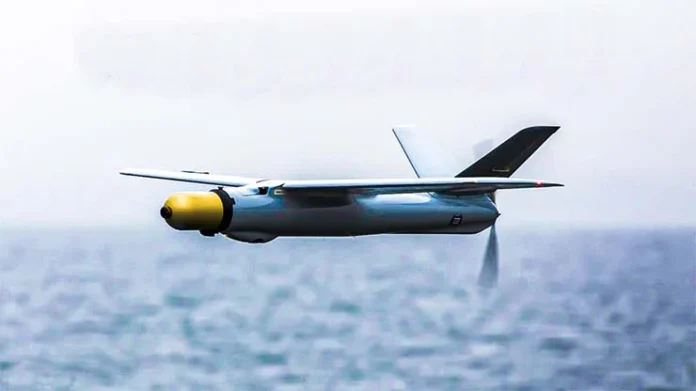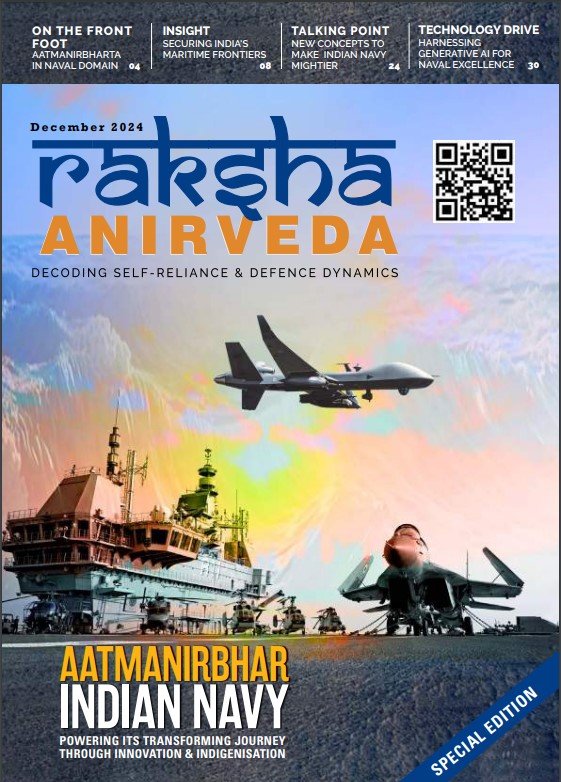New Delhi: In a boost to India’s air defence, the Indian Air Force (IAF) got its first batch of Vertical Take Off and Landing (VTOL) developed by TATA Advanced Systems Limited (TASL). The autonomous system has successfully demonstrated its capability to carry out precision strikes during trials and tests, media reports said.
ASL-50 loitering munition has successfully demonstrated its ability to strike targets during tests at Pokhran. The system was able to hit the designated ground target accurately during trials. Earlier, it had demonstrated its ability to operate from high-altitude areas during trials in Ladakh earlier this year.
Built using lightweight composites, the system has a range of over 50 kilometres. It has five flight modes—fully autonomous, semi-autonomous, loiter, attack and return home. The system is capable of Vertical Take Off and Landing (VTOL), which means it can take off and land like a quadcopter. This will allow the user to operate the system from areas with limited space, like narrow valleys in eastern Ladakh and Arunachal.
“ALS being indigenously developed, is adapted to the wide variety of Indian terrain and weather conditions,” TASL says, adding that the system will soon be inducted in “one of the armed forces of India”. After take-off, the system transitions into the fixed wing mode and flies to its target. It is equipped with an autonomous targeting system, which allows it to identify its pre-designated target and home into it.
Loitering munition can be used to destroy enemy targets that may be beyond line of sight, including high value targets like command centres and missile launchers, that may be located at a distance. The system is useful in both surveillance and combat roles. It provides a live feed to the user, allowing them to guide the munition as required. It also has multiple built-in failsafe features, which ensures the “system can be aborted after launch, recovered, and made to re-attack the same or a different target”, TASL said in the literature distributed at the DefExpo.
Apart from TASL’s ALS-50, loitering munitions are being developed by other Indian defence companies like ALFA-S by NewSpace Research and Technologies and Achuk by Redon Systems.
ALFA-A, a tube-launched (cannisterised) loitering munition, has a service ceiling of 6 kilometre, a range of 140 km and an endurance greater than 60 minutes. Achuk is also cannisterised system and has a strike radius of 30 km. It has a 3,500 meter operational height and is capable of operating in temperatures between -20 degree celsius to 50 degree celsius.
Indian armed forces are inducting loitering munitions in various categories, including the Buy Indian (IDDM) category of DAP-2020. While the artillery regiments will receive loitering ammunition ordered under emergency procurement last year, plans are afoot to induct canister launch loitering system to be integrated on the BMP-2 infantry fighting vehicle. The Indian Army will soon begin inducting loitering munition bought under an emergency procurement contract signed with an Israeli-Indian joint venture.
The Army had signed a contract with a joint venture between India’s Alpha Design Technologies Limited and Israel’s Elbit Systems for the procurement of 100 SkyStriker light munition systems last year. SkyStriker, its marker Elbit Systems says, can be used for long-range precise tactical strikes. Fully autonomous, it is capable of acquiring and hitting operator-marked targets. SkyStriker can cover a distance of 20 kilometres in 10 minutes. It can loiter and pursue a target up to two hours when carrying 5 km warhead and for up to one hour when fitted with a 10 kg warhead.













